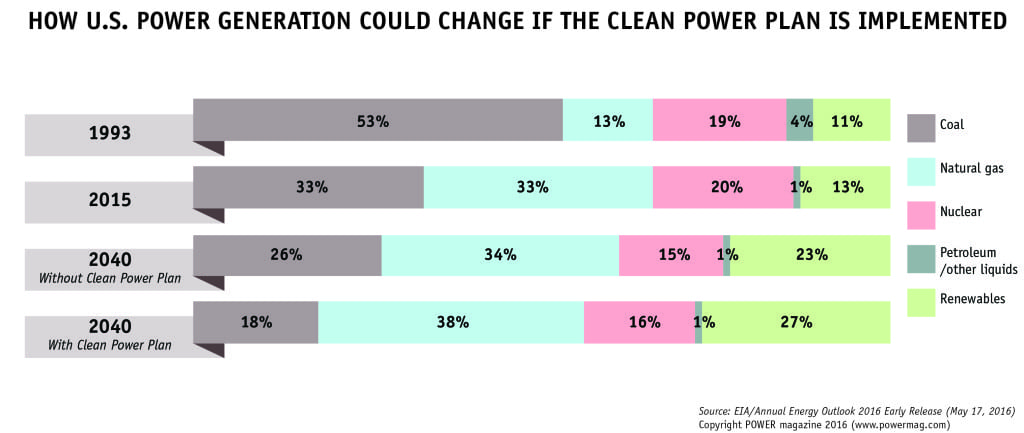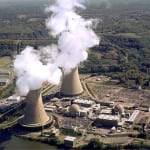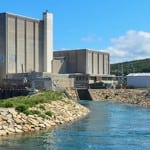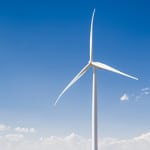The U.S., Mexico, and Canada today announced an unprecedented goal to procure 50% of North America’s total power generation from renewables, nuclear, carbon capture and storage (CCS), and energy efficiency technologies by 2025.
President Obama, Prime Minister of Canada Justin Trudeau, and the President of Mexico Enrique Peña Nieto, announced the continental goal, part of the North American Climate, Clean Energy and Environment Partnership, at the “Three Amigos” North America Leader’s Summit in Ottawa, Canada.
The countries plan to meet that goal with a range of aggressive domestic initiatives and policies, including Mexico’s Energy Transition Law and new Clean Energy Certificates, the U.S. Clean Power Plan and five-year extension of production and investment tax credits, and Canada’s actions to further scale-up renewables, including hydro.
The goal will also require collaboration on 5,000 MW of cross-border transmission projects to facilitate deployment of renewable power. The projects include six transmission lines currently proposed or that are under permitting review, such as the Great Northern Transmission Line, the New England Clean Power Link, and the Nogales Interconnection.
It will involve a joint study of the opportunities and impacts of adding more renewables to the electric grid on a continental basis, and the “greening” of government operations to 100% clean energy by 2025. Measures also include aligning 10 appliance efficiency standards or test procedures by 2019, the White House said in a statement on June 29.
Essentially a Climate Pact
The three countries also committed to reduce their methane emissions from the oil and gas sector by 40% to 45% by 2025, pledging to develop and implement federal rules to slash emissions from existing and new sources in the “oil and gas sector as soon as possible.”
The White House said the goal is necessary because a delay in cutting carbon emissions could cause the mean global temperature to stabilize at 3 degrees C above preindustrial levels instead of 2 degrees, citing estimates from the White House Council of Economic Advisers. That delay will induce annual additional economic damages of approximately 0.9% of global output, it said.
The Obama administration noted that a “dramatic transformation of our energy system is underway,” which will help all three countries meet the energy target.
“The share of the share of non-hydropower renewables has increased from roughly 3 percent in 2008 to 7.3 percent in 2015. Wind and solar energy alone currently make up over 5 percent of generation and were less than 1.5 percent in 2008. This growth is expected to continue apace, with the U.S. Energy Information Administration (EIA) projecting wind and solar generation to nearly double by 2025 under business as usual,” it said.
In a departure from its silence on the future of nuclear power, the administration on June 29 also highlighted nuclear’s clean energy role.
A Long Way to Go?
In 2015, about 37% of the combined power generated in all three countries was from “clean” sources.
The Energy Information Administration estimates that about a third of total U.S. power generation came from renewables (13%) and nuclear plants (20%) in 2015.

The U.S. doesn’t currently have a nationwide regulatory mandate to increase production of energy from renewables or any other energy sources, though renewable portfolio standards programs currently exist in 29 states and Washington D.C. According to the National Renewable Energy Laboratory, many of these policies, which were enacted largely during the late 1990s and 2000s, will reach their terminal targets by the end of this decade.
Mexico, which pledged to reduce its greenhouse gas emissions under the Paris Accord, has established a target to generate 40% or more of its power from zero- or low-emission energy sources by 2035, and by 50% by 2050. In 2015, an estimated 21% share of its total power generation came from nuclear (4.4%) and renewables (16.6%).
In 2013, Canada produced 62.6% of its power from hydro, 3.4% from non-hydro, and 13.3% from nuclear—a total 79.3% from zero- or low-carbon sources.
Of Unicorns and Workhorses
Even before the commitment was cemented on June 29, industry groups predictably issued statements lauding or blasting the measure.
The American Coalition for Clean Coal Electricity criticized the Obama administration’s vague plans to achieve the goal. “The Administration says one of the ways it will meet its goal is by utilizing energy from power plants with CCS. The problem with that assertion, however, is that there are no scalable plants anywhere in the world with CCS and none will ever be built in this country thanks to regulations promulgated by this Administration,” said Laura Sheehan, a senior vice president at the industry coal coalition.
“So the question is, just where will all this low- or zero-carbon energy come from? Certainly not rainbows and unicorns which one would have to pockets full of to meet these pie in-the-sky commitments.”
The American Wind Energy Association (AWEA) countered that the goal was certainly achievable. “Getting half of North America’s electricity production from zero-emission clean energy by 2025 is possible thanks to low-cost, reliable wind energy,” said AWEA CEO Tom Kiernan.
“As the lowest-cost zero-emission energy source by a large margin, wind energy will be the workhorse to meet future carbon reduction targets, while saving consumers money.”
—Sonal Patel, associate editor (@POWERmagazine, @sonalcpatel)










